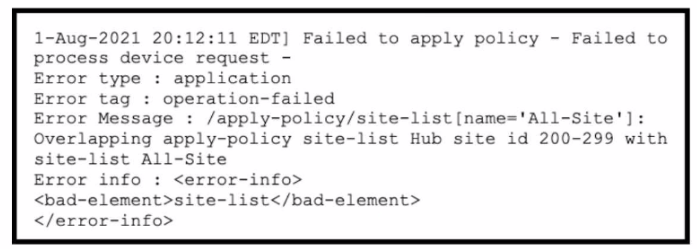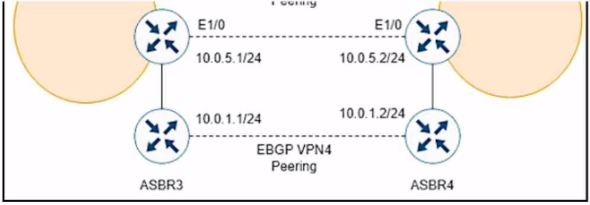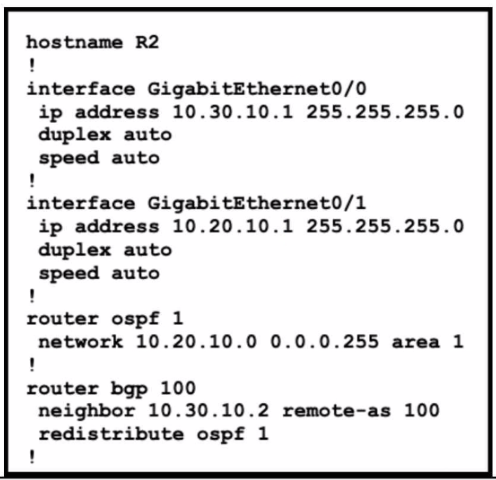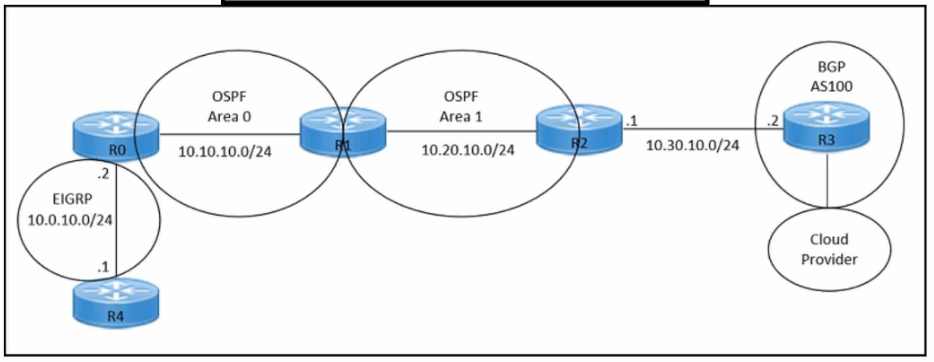Most Recent Cisco 300-440 Exam Dumps
Prepare for the Cisco Designing and Implementing Cloud Connectivity exam with our extensive collection of questions and answers. These practice Q&A are updated according to the latest syllabus, providing you with the tools needed to review and test your knowledge.
QA4Exam focus on the latest syllabus and exam objectives, our practice Q&A are designed to help you identify key topics and solidify your understanding. By focusing on the core curriculum, These Questions & Answers helps you cover all the essential topics, ensuring you're well-prepared for every section of the exam. Each question comes with a detailed explanation, offering valuable insights and helping you to learn from your mistakes. Whether you're looking to assess your progress or dive deeper into complex topics, our updated Q&A will provide the support you need to confidently approach the Cisco 300-440 exam and achieve success.
The questions for 300-440 were last updated on May 5, 2025.
- Viewing page 1 out of 8 pages.
- Viewing questions 1-5 out of 38 questions
A company with multiple branch offices wants a suitable connectivity model to meet these network architecture requirements:
* high availability
* quality of service (QoS)
* multihoming
* specific routing needs
Which connectivity model meets these requirements?
A fully meshed topology with SD-WAN technology using dynamic routing and prioritized traffic for QoS meets the network architecture requirements of the company. A fully meshed topology provides high availability by eliminating single points of failure and allowing multiple paths between branch offices. SD-WAN technology enables multihoming by supporting multiple transport options, such as MPLS, internet, LTE, etc. SD-WAN also provides QoS by applying policies to prioritize traffic based on application, user, or network conditions. Dynamic routing allows the SD-WAN solution to adapt to changing network conditions and optimize the path selection for each traffic type. A fully meshed topology with SD-WAN technology can also support specific routing needs, such as segment routing, policy-based routing, or application-aware routing.Reference:
Designing and Implementing Cloud Connectivity (ENCC) v1.0
[Cisco SD-WAN Design Guide]
[Cisco SD-WAN Configuration Guide]
Refer to the exhibit.

A company uses Cisco SD-WAN in the data center. All devices have the default configuration. An engineer attempts to add a new centralized control policy in Cisco vManage but receives an error message. What is the problem?
The problem is that the site-list ''All-Site'' has a higher match sequence than the site-list ''Hub'', which means that the policy for ''All-Site'' will take precedence over the policy for ''Hub'' for any site that belongs to both lists. This creates a conflict and prevents the engineer from adding a new centralized control policy in Cisco vManage. To resolve this issue, the site-list ''All-Site'' should be configured with a new match sequence that is lower than the sequence for site-list ''Hub'', so that the policy for ''Hub'' will be applied first and then the policy for ''All-Site'' will be applied only to the remaining sites that are not in the ''Hub'' list.Reference:=
Refer to the exhibits.

While troubleshooting, a network engineer discovers that the backup path fails between ASBR3 and ASBR4 for traffic between BGP AS6000 and BGP AS6500 when the connection between ASBR1 and ASBR2 goes down. The following configurations were performed on ASBR1:

Which command is missing?
A company with multiple branch offices wants a connectivity model to meet its network architecture requirements. The company focuses on ensuring low latency and efficient routing for its critical business applications. Which connectivity model meets these requirements?
A fully meshed topology with SD-WAN technology, using dynamic routing and BGP as the routing protocol, meets the requirements of the company because it provides the following benefits:
1: Designing and Implementing Cloud Connectivity (ENCC, Track 1 of 5) (Cisco U. login required)
Refer to the exhibits.


Refer to the exhibits. An engineer must redistribute only the 10.0.10.0/24 network into BGP to connect an on-premises network to a public cloud provider. These routes are currently redistributed:

Which command is missing on router R2?
The commandredistribute ospf 1 match externalis missing on router R2. This command is needed to redistribute only the external OSPF routes into BGP. The external OSPF routes are those that are learned from another routing protocol or redistributed into OSPF. In this case, the 10.0.10.0/24 network is an external OSPF route, as it is redistributed from EIGRP into OSPF on router R1. The other commands are either already present or not relevant for this scenario.Reference:=
Unlock All Questions for Cisco 300-440 Exam
Full Exam Access, Actual Exam Questions, Validated Answers, Anytime Anywhere, No Download Limits, No Practice Limits
Get All 38 Questions & Answers